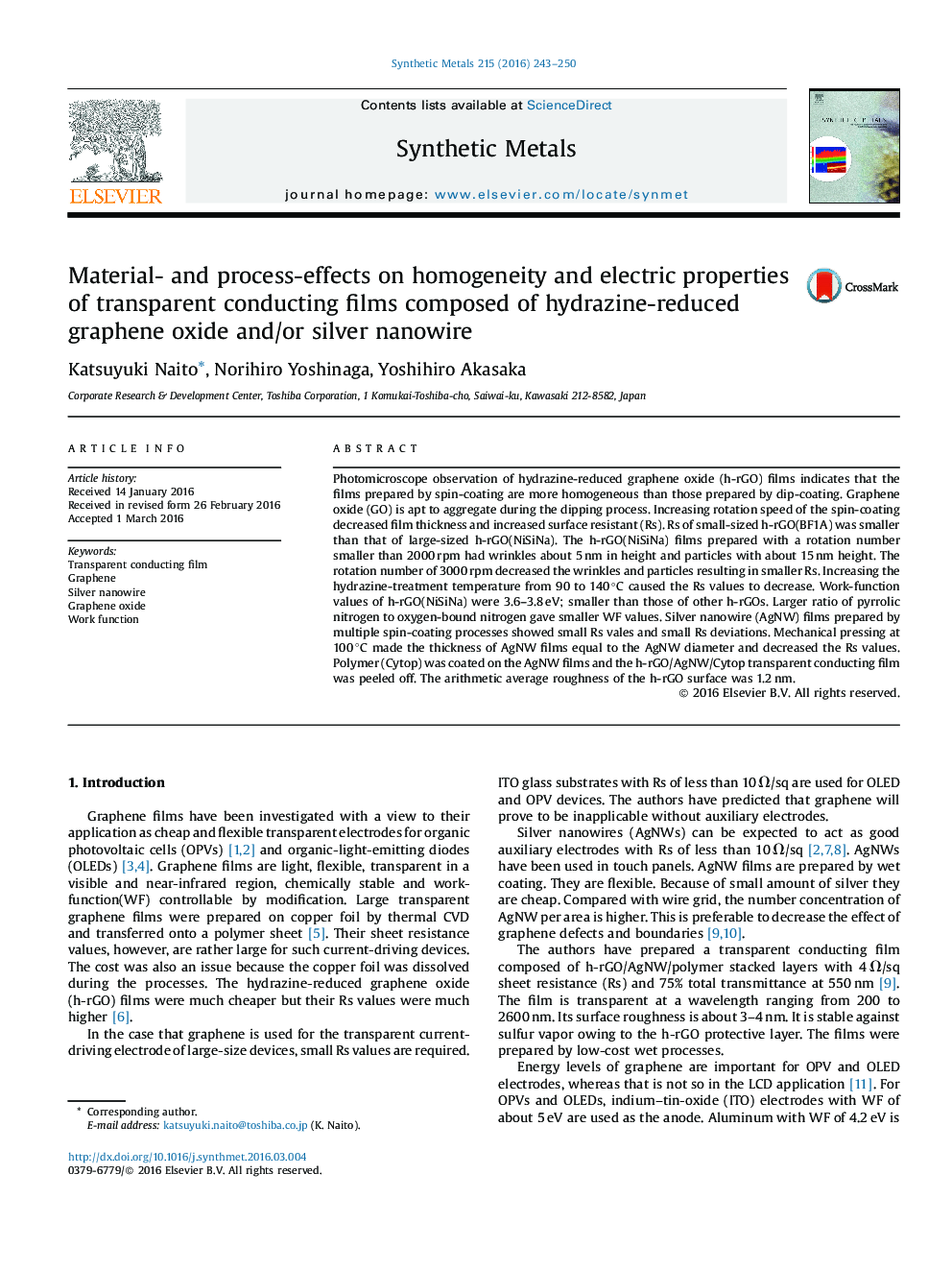| Article ID | Journal | Published Year | Pages | File Type |
|---|---|---|---|---|
| 1440275 | Synthetic Metals | 2016 | 8 Pages |
•h-rGO films prepared by spin-coating are more homogeneous than those by dip-coating.•Large-sized h-rGO(NiSiNa) films prepared with a rotation number of 2000 rpm had wrinkles.•Larger ratio of pyrrolic nitrogen to oxygen-bound nitrogen gave smaller WF values.•Mechanical pressing at 100 °C made the thickness of AgNW films small.•The arithmetic average roughness of h-rGO/AgNW/Cytop film was 1.2 nm.
Photomicroscope observation of hydrazine-reduced graphene oxide (h-rGO) films indicates that the films prepared by spin-coating are more homogeneous than those prepared by dip-coating. Graphene oxide (GO) is apt to aggregate during the dipping process. Increasing rotation speed of the spin-coating decreased film thickness and increased surface resistant (Rs). Rs of small-sized h-rGO(BF1A) was smaller than that of large-sized h-rGO(NiSiNa). The h-rGO(NiSiNa) films prepared with a rotation number smaller than 2000 rpm had wrinkles about 5 nm in height and particles with about 15 nm height. The rotation number of 3000 rpm decreased the wrinkles and particles resulting in smaller Rs. Increasing the hydrazine-treatment temperature from 90 to 140 °C caused the Rs values to decrease. Work-function values of h-rGO(NiSiNa) were 3.6–3.8 eV; smaller than those of other h-rGOs. Larger ratio of pyrrolic nitrogen to oxygen-bound nitrogen gave smaller WF values. Silver nanowire (AgNW) films prepared by multiple spin-coating processes showed small Rs vales and small Rs deviations. Mechanical pressing at 100 °C made the thickness of AgNW films equal to the AgNW diameter and decreased the Rs values. Polymer (Cytop) was coated on the AgNW films and the h-rGO/AgNW/Cytop transparent conducting film was peeled off. The arithmetic average roughness of the h-rGO surface was 1.2 nm.
Graphical abstractFigure optionsDownload full-size imageDownload as PowerPoint slide
